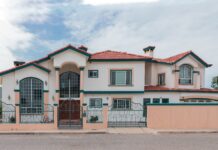Under the Health & Safety Act 1974, it is the responsibility of the owner of a business, or a landlord of a rental property, to comply with Legionella control regulations and ensure a risk assessment has been carried out.
This means that a Legionella risk assessment has been conducted at the premises, or property, to determine there is no danger of Legionella present, and there is no risk to staff members or tenants.
What is Legionella?
Before we explain how a Legionella risk assessment works, let’s talk about Legionella. It is a bacterium found in natural water sources, like ponds, lakes and rivers, but is also found in man-made water systems. The bacteria are hazardous to human health when small droplets of water carrying the bacteria are inhaled.
It can lead to Legionnaires’ disease, which is a severe form of pneumonia, which can be fatal. Typical symptoms include tiredness, headaches, aching muscles, a dry cough, and a fever, In extreme cases, it could even cause confusion and diarrhoea. Most people will recover, so long as they are treated with antibiotics as soon as possible.
In England and Wales, around 200-250 confirmed cases of Legionnaires’ disease are reported each year, but this figure could be higher where only mild symptoms have occurred. It is also a disease that is often associated with travel abroad.
What is a Legionella risk assessment?
Our Legionella risk assessment identifies any potential risk factors within the premises, facilities or property’s hot and cold water systems, as well as any natural water located nearby. Any findings by the assessment are used to find the source of the Legionella to determine what interventions need to be implemented.
The risk assessment includes:
- Providing an introduction to and background information on Legionella.
- Site details.
- A Legionella Management Documentation audit.
- A condition survey report of domestic water plant.
- Temperature profiling.
- Photographic evidence.
- Asset register.
- Basic schematic of plant and distribution.
- Identification of risks, including (but not limited to) dead leg pipework and little used outlets.
Once the risk assessment has been completed, we will provide you with our recommendations for future Legionella control and management. This includes advising of any necessary protocols and systems that need to be implemented to establish robust Legionella risk controls.
We would also advise that risk assessments are reviewed and kept up-to-date on a regular basis, and conducted if the premises, facilities or property has been left empty for any period of time.
Is it a legal requirement?
Yes, is the simple answer! Under the UK’s Health & Safety Act 1974, all business owners, employers, landlords and property managers are legally required to ‘assess, mitigate and consider the risk of Legionella within their business or property.’
A Legionella risk assessment ensures you and your premises, facilities or property are conforming to the safety regulations and your employees and tenants are protected by proving you’ve taken the necessary action to keep people safe.
Being a recognised hazard to people’s health, a Legionella risk assessment should always be carried out by experienced, knowledgeable professionals. Our highly professional team at Swiftclean are trained and skilled in conducting Legionella risk assessments, ensuring you are always complying with regulations.






















